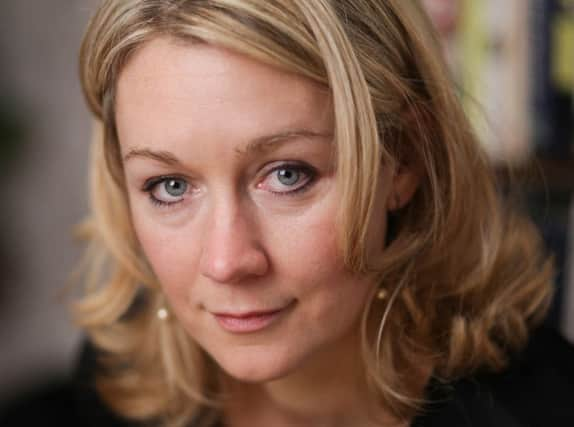How High Royds Psychiatric Hospital isnpired a new novel


Sometimes an image is so evocative it can trigger a profound response in the viewer. It was such an experience – coupled with an affecting piece of family history – that inspired London-based author Anna Hope to write her latest book, The Ballroom.
It was while researching her highly acclaimed debut novel The Wake, set in the aftermath of the First World War, that Hope discovered some hitherto unknown information about her great-great grandfather John Mullarkey who came over from the West of Ireland to find work in the Yorkshire mills. Looking through the 1911 census she found her great-great grandmother, working in a mill in Bradford, but there was a note explaining her husband was absent because he was at Menston Asylum (later known as High Royds Psychiatric Hospital, which closed in 2003).
Advertisement
Hide AdAdvertisement
Hide Ad“I then found this incredible archive about the hospital online and I thought it looked like a fascinating place,” she says. “In a way it confirmed all my prejudices about Victorian asylums until I saw a picture of the ballroom – it was so beautiful. I thought I have to write about this place.” In an author’s note Hope points out that ‘while the asylum provided the inspiration for my work, The Ballroom is a novel and is in no way meant to be an accurate representation of life or events at High Royds.’ The hospital in the book, set over the hot summer of 1911, is renamed Sharston – and while the three protagonists John, Ella and Charles are fictional characters, John shares some biographical details with Hope’s ancestor. “They both came over from Ireland as single men looking for work and ended up destitute and suffering from melancholia,” says Hope. “But their stories are different. My great-great-grandfather ended up dying in Menston Hospital in his early fifties in 1918. I visited the site while I was researching the book and I found it really moving to think of him there.”
A poignant, beautifully written romance, The Ballroom tells the story of patients John and Ella who meet at the weekly dance and discover that, despite the difficult circumstances in which they find themselves, there is a possibility of change for the better. “As a writer I am really interested in exploring darkness and dark scenarios,” says Hope. “But there also has to be a thread of hope and a sense of moving towards the light, so the moment I saw that image of the ballroom I knew there was going to be a love story – there had to be. Love stories are most interesting when there are obstacles in the way – and there were for John and Ella, not least the fact that they could only meet once a week.”
Although their story is at the centre of the novel, it also explores attitudes to mental health – and the poor (High Royds was originally called The West Riding Pauper and Lunatic Asylum) – during the Edwardian era, including touching on the controversial subject of eugenics. However, through her extensive research – the book took three years to write – Hope also came across many examples of patients being successfully treated at Menston. “I was glad to have my preconceptions challenged by the evidence in the casebooks. It was not a simple picture of a dark, depressing place.”
The Ballroom, Doubleday, £12.99. Anna Hope will be at The Clarke Foley Centre, Ilkley on February 22 at 7.30pm and at Bradford Waterstones on February 23 at 6pm.